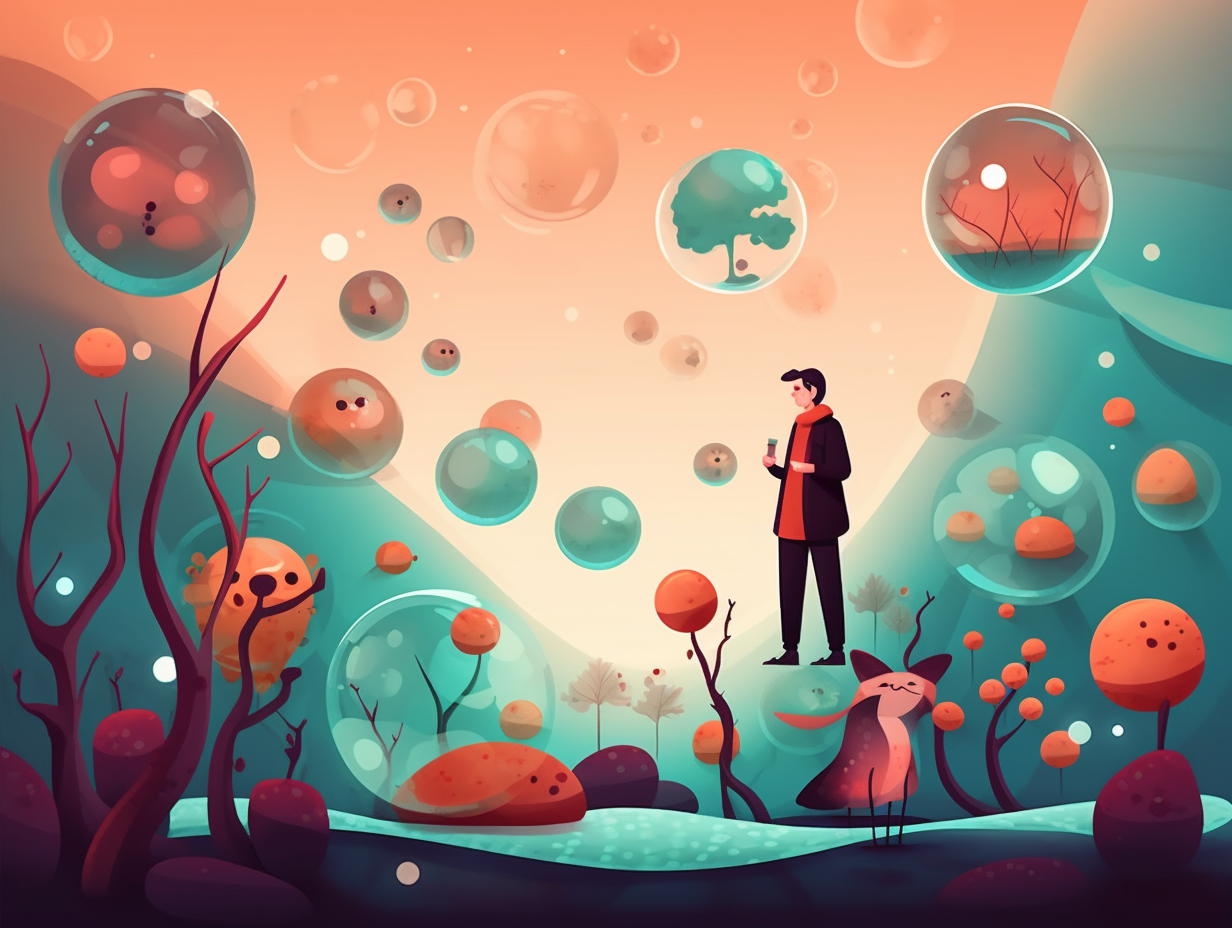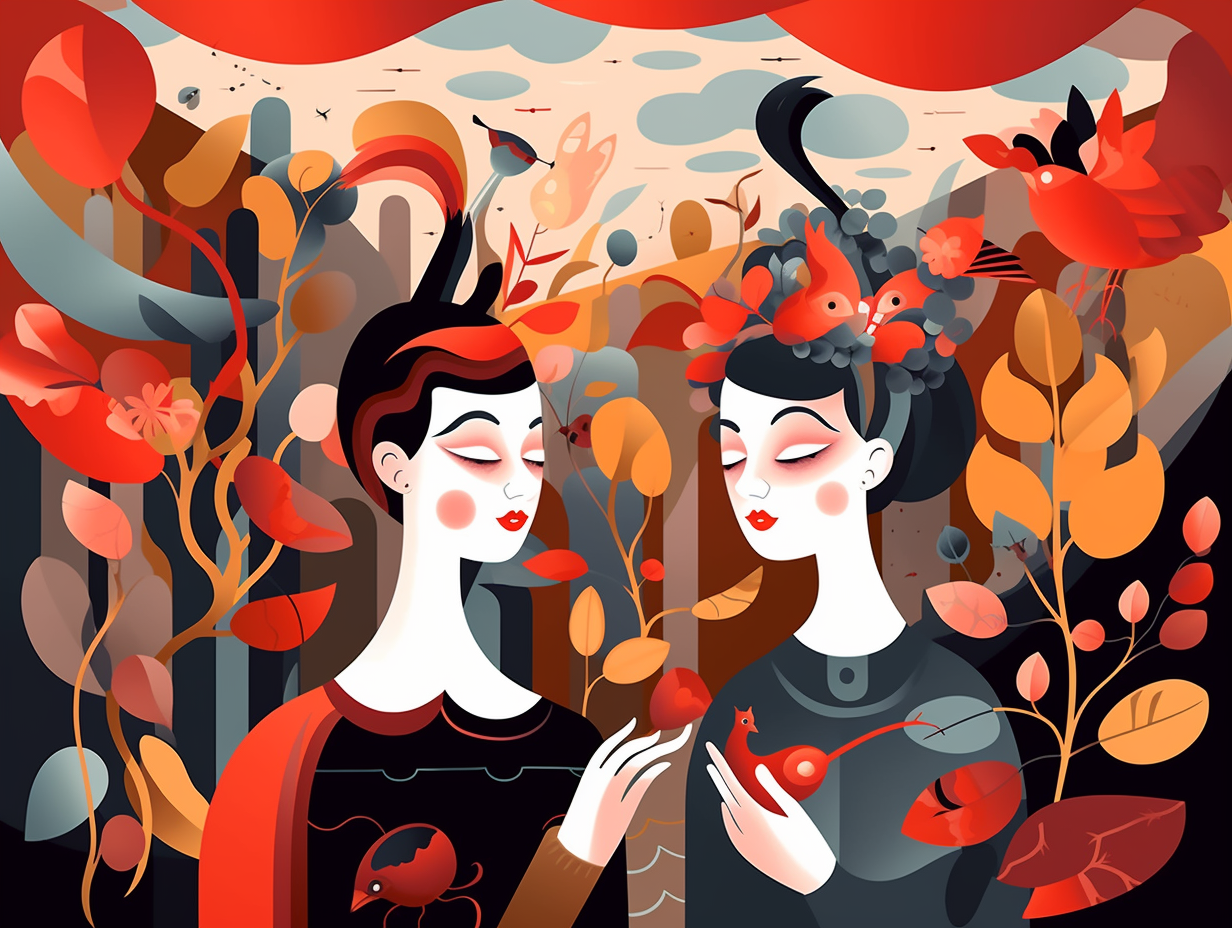Discover the Wonders: Top 12 Fun Facts About Asexual Reproduction You Never Knew!

1. Sea Stars: Beyoncé of the Ocean
Who knew sea stars were the ultimate multitaskers, juggling solo careers and epic love lives? They're basically the Beyoncé of the ocean: Sea stars can reproduce asexually by breaking off a piece of their arm and central disk to create a new individual, but they don't shy away from good old-fashioned sexual reproduction either, releasing sperm and eggs into the water for a romantic rendezvous, leading to fertilized embryos that eventually join the zooplankton ensemble before growing into full-fledged sea stars.
Source => mesa.edu.au
2. Hydrozoans: Budding Party Animals
In the timeless classic "Hydrozoans Gone Wild", starring budding celebrities from the Hydrozoa family: when the party gets a little too wild, they drop tiny replicas of themselves to keep the good times rolling: This unique form of asexual reproduction, known as budding, allows new individuals to grow from small outgrowths on the parent polyp. Fear not, for these aquatic party animals also know how to mix it up with some good old-fashioned sexual reproduction via gamete production from polyps or medusae.
Source => animaldiversity.org

Discover the surprising truth about cell division! Mitosis doesn't create exact replicas of the parent cell, as factors like size and protein content can differ. Uncover the fascinating process behind our body's growth and tissue functioning! 🧬🔬
=> Fun Facts about Mitosis
3. Plant Clones: Green-thumb Revolution
Talk about a green-thumb revolution: asexual reproduction allows plants to produce clone offsprings by using just a stem, root, or leaf, creating an army of genetically identical flora warriors that not only preserve specific cultivars but can also dodge the awkward puberty phase of juvenile species, all while being quicker and more efficient than other forms of reproduction!
Source => extension.umaine.edu
4. Fungi: Tinder-free Reproduction
Who needs Tinder when you're a fungus? Fungi are the ultimate singles, stepping into the dating game with their own peculiar ways of asexual reproduction: Fragmentation, budding, and spore production make fungi the champions of making new partners without getting a single dating app swipe. With spores that can be unleashed outside or within a fancy house called a sporangium, fungi both upgrade their living situations and conquer new terrain without needing to take a single profile picture.
Source => bio.libretexts.org

5. Garlic: Dual Reproduction Charmer
Dracula's least favorite salad ingredient has quite the secret nightlife: Garlic, besides brandishing a pungent reputation, boasts an intriguing dual life in the realm of reproduction, courting both asexual and sexual means. Through bulbils on its scapes, it propagates newer, tinier garlic plants, but also fans its reproductive flames via cloves. Further, it dabbles in a little vernalization flirtation, where chilly weather triggers it to put forth flowers and bulbs ready for some reproductive action.
Source => groeat.com
6. Komodo Dragons: Knight & Baby Maker
Talk about being your own knight in shining armor: Komodo dragons can reproduce asexually through parthenogenesis, resulting in their newborn male offspring carrying genetic material derived solely from the mother.
Source => scientificamerican.com
7. Strawberries: Independent Pollinators
Strawberries declare their relationship status as "independent": they are capable of self-pollination, although they still don't mind a little help from their buzzing bee friends in the pollination department.
Source => extension.umn.edu
8. Aphids: Climate-Controlled Dating
Aphids, the green little gluttons of the garden world, have a dating life that's far from monotonous, boasting an impressive split personality when it comes to making babies: Depending on the thermostat, these tiny pests can either reproduce asexually through parthenogenesis, creating clones of themselves in balmy weather, or switch to the birds-and-bees method come winter, laying fertilized eggs for a more diverse family tree.
Source => sciencedaily.com
9. Flatworms: Rip-and-Reproduce
Who said tearing yourself apart was a bad thing? Not for these sly flatworms: Freshwater planarians can reproduce asexually through a process called fission, in which they literally rip themselves into two pieces that eventually form two new worms within about a week.
Source => biology.ucsd.edu

10. Bacteria: Division Domination
Do you want to live life in the fast lane, or maybe just multiply like a maniac without your better half? Look no further than bacteria: they reproduce asexually through binary fission, dividing one cell into two identical ones and quickly building their population like nobody's business.
Source => khanacademy.org
11. Dandelions: Cloning Connoisseurs
If Dandelions had dating profiles, they'd be effortlessly swiping left on all suitors. Their secret to thriving without Tinder? A scandalous little trick called apomixis: Self-cloning means Dandelions can create perfect copies of themselves, transforming a lone plant into a whole field of identical flower child offspring!
Source => naturenorth.com
12. Lady Hammerheads: Solo Shark Miracle
In a world where Jaws meets A Star Is Born, lady hammerhead sharks drop jaws further by going solo in the baby-making department like the independent queens they are: Female hammerhead sharks can reproduce asexually through a process called parthenogenesis, resulting in offspring with only maternal genetic information and reduced genetic diversity - a rare phenomenon observed only in a handful of vertebrate species, making it quite the sharktastic scientific discovery.
Source => sciencedaily.com
Related Fun Facts




















